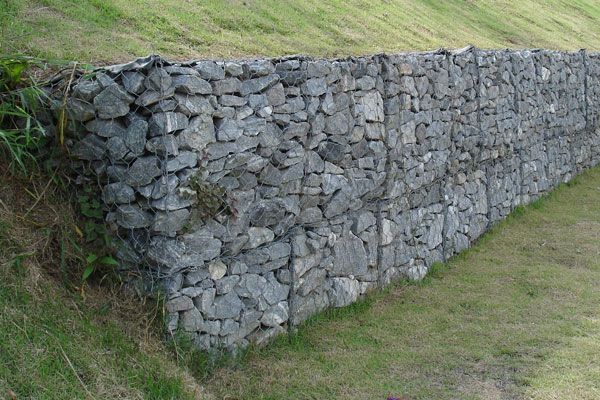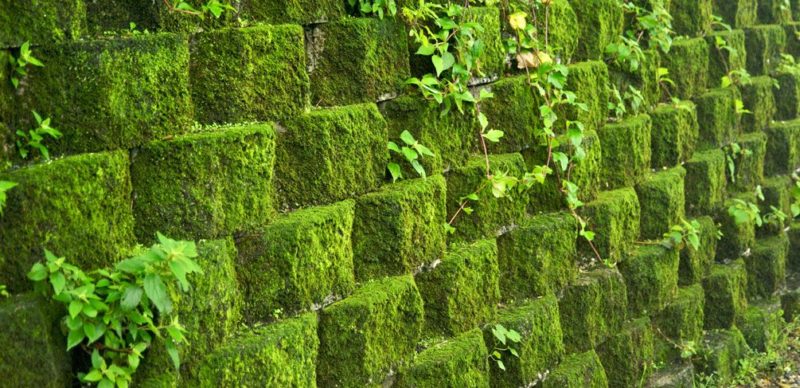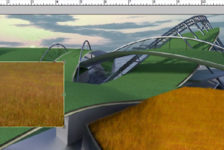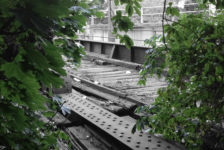Effective ways to deal with a potential slope disaster. Do you ever think about how difficult it is for a landscape architect to plan and design a really contoured site or landscape? Imagine the worst thing that can happen when a high number of steep slopes remain bare and unprotected: High-intensity erosion caused by rain or wind and the unbearable load of the structure above can cause a landslide at any time, destroying everything in its path. Preventing a landslide can be a bit of a challenge. Protecting the slopes would be the first idea for dealing with a situation like this. So, what can we do to protect a slope? Here are some slope protection hacks for you to use if you are facing a possible erosion problem. 1. Vetiver grass (Chrysopogon zizanioides) Chrysopogon zizanioides, well known as Vetiver grass, may be the biggest breakthrough in soil and water conservation in the past few years. The use of a Vetiver grass system can effectively — and at low cost — protect slopes, stop or significantly reduce the risk of slippage, and prevent downstream water contamination. This is because Vetiver grass roots have a high-tensile strength and because when planted on slopes, the grass reduces hydraulic pressure through the removal of water. WATCH: Vetiver: Green Tech for the 21st Century
The combination of slippage prevention (mass wastage of soil) and the grass’ sediment-filtering ability results in very clean water moving down the catchment. Vetiver grass as been applied in many places all over the world and is getting a good response. This system not only provides a solution to slope protection and soil conservation, but also provides significant economic, environmental, and social benefits by keeping a sustainable environment, as shown in the diagram below. 2. Geoweb A Geoweb system provides an economical solution to slope and surface stability problems while meeting a wide range of performance and aesthetic requirements. This system can provide a fully vegetated slope surface that otherwise could not support sustainable plant life. WATCH: Geoweb slope protection and perforations
The structure has a variety of infill options, including fertile and rich topsoil for vegetation, aggregates from sand, gravel or even larger size rock, and even using concrete of various strength and surface finishes. Geoweb structures can resist down-slope movement of embankment material and anticipate hydraulic flows, control erosion, and increase vegetation stability on slopes. Related Articles:
- Is Architectural Engineering Paving the Way for New Opportunities in Landscape Architecture?
- Metamorphous: The Constantly Changing Seawall Sculpture
- Lotus Lake Park Sets Precedent for Sustainable Urban Design in China
3. Gabion Old but gold: Gabion structures installation for slope protection may look conventional, but the ability to provide a surface to support plant life and good permeability is just too good to not get attention. Gabion structures have a good flexibility and durability to protect a steep slope.

Gabion- corrosion resistant wire containers filled with stone used to build retaining walls, revetments, slope protection, channel linings and other engineering structures. Credit: Eurico Zimbres. Licensed under CC S A 2.5
This slurry is applied with pressure to the surface for seed germination and turf development. It gives you a quick, safe, cost-effective, easy-to-apply ground cover, turf, fern, or any other vegetation for your slope’s protection. Which ever way you to decide to adapt your slope, make sure it fits in with the overall scheme of the site, merging with the design, enviornment and long term purpose. For every situation there is a suitable solution. Recommended Reading:
- Principles and Practice of Engineering: Architectural Engineering Sample Questions and Solutions by Mark McAfee
- Standard Handbook of Architectural Engineering by Robert Brown Butler
Article by Harkyo Hutri Baskoro Return to Homepage
Published in Blog












